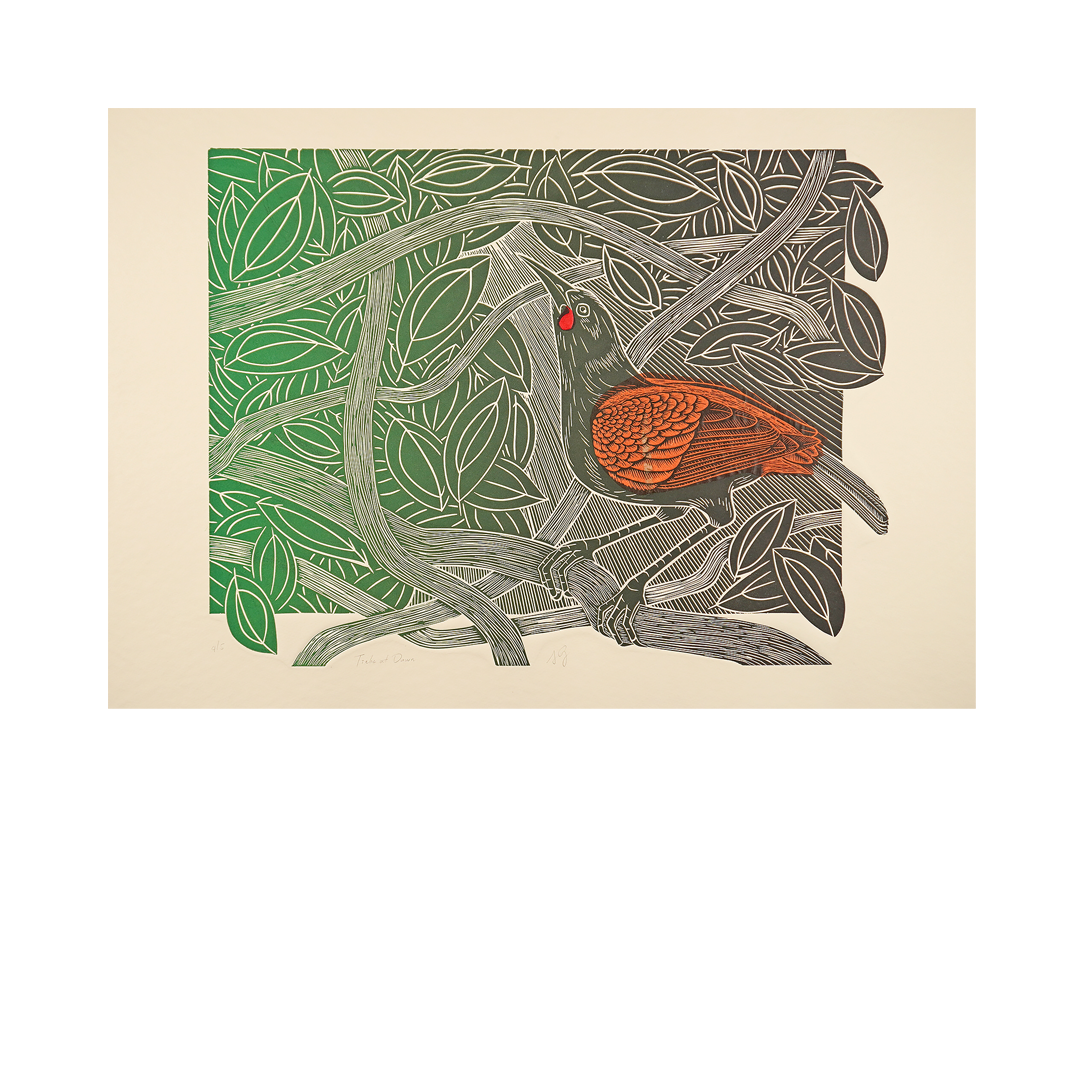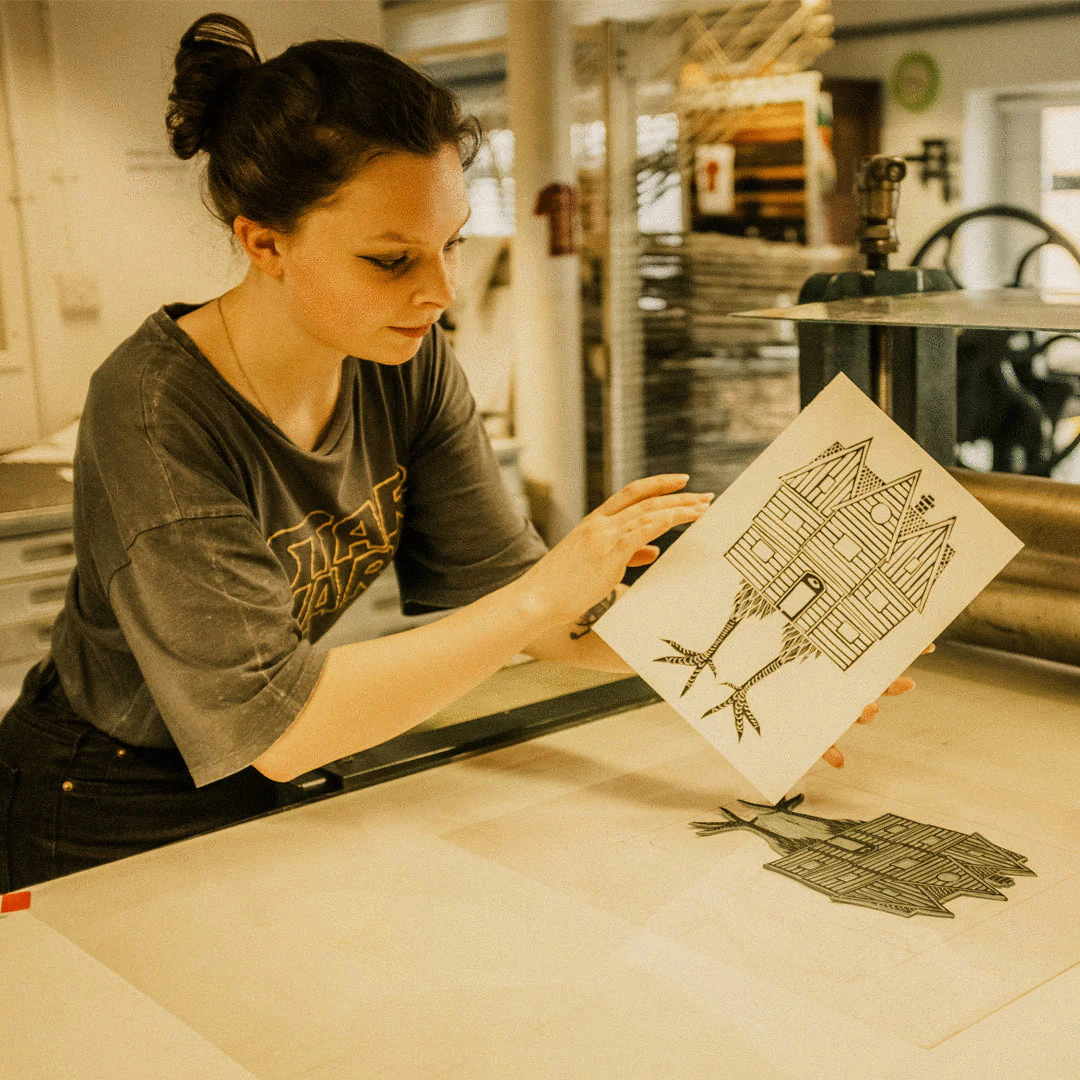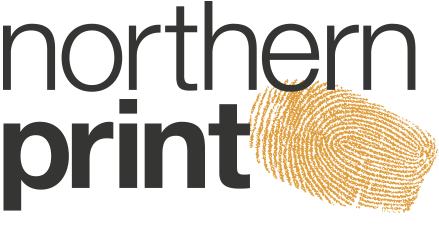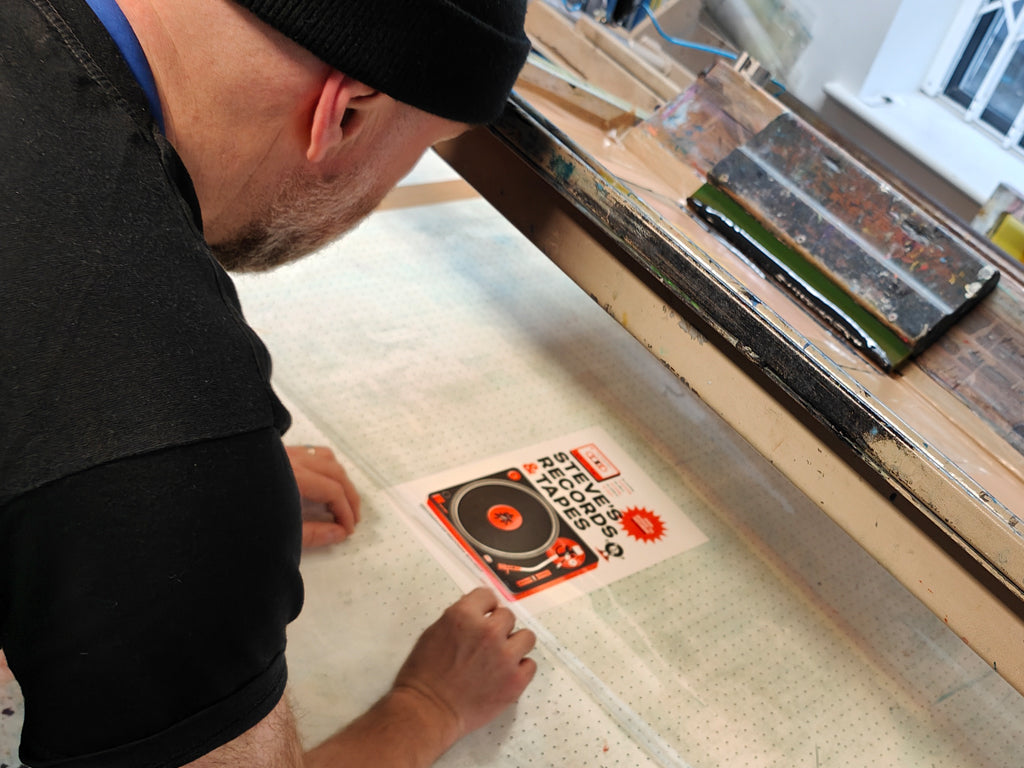Tīeke at Dawn
Tīeke at Dawn
Artist: Simon Gardiner
Medium: Linocut & Chine Collé
Dimensions: Paper Size 56 x 38cm / Image Size 42 x 31cm
Edition: 5
Postage & Packing
Postage & Packing
£9 UK postage & packing in secure postal tube.
By selecting this option, you confirm that you want to apply Gift Aid.
Couldn't load pickup availability
Share

Information
-
About this print
The print was developed from a sketch of a North Island Saddleback in Zealandia, Wellington. Tīeke, or Saddleback (there are both North Island and South Island species that in adult form are very similar) were once widespread in both mainland islands of New Zealand, however began to decline upon deforestation and the spread of introduced predators (rats, cats and stoats), owing to their habit of nesting low and their fledgelings being active on the ground (tīeke are limited fliers and as adults typically hop from branch to branch). By the 1960s the North Island species was reduced to a relict population on Taranga/Hen Island in the Hauraki Gulf, northwest of Auckland. Translocation efforts, which began shortly after, have spread it to other island sanctuaries and to mainland fenced sanctuaries, including Zealandia, where they were reintroduced in 2002; equivalent efforts saved the South Island species from almost certain extinction when rats were accidentally introduced by boat to Taukihepa/Big South Cape Island, off Rakiura/Stewart Island.
According to Māori tradition, tīeke acquired their coloured "saddle" from Māui, fresh from his battle to tame the sun Tama-nui-te-rā, who had previously moved across the sky too quickly, and burned too fiercely. Thirsty, Māui asked the tīeke for water. Tīeke pretended not to hear, and Māui, angry, grasped the bird's body with his still burning-hot hand, leaving a scorch mark across its back.
While still confined to isolated relict populations, the recovery of tīeke populations stimulated pioneering work in translocating bird populations, and is regarded by many as one of Aotearoa/New Zealand's greatest conservation success stories, as I remember being told in primary by probably a representative of DOC (New Zealand's Department of Conservation) in about 1980. Following the 2002 release of tīeke in Zealandia, there has been confirmed evidence of breeding in neighbouring Polhill reserve, outside the predator-proof fence, since 2014, just over a century after their having been declared extinct on the mainland in 1910. -
Endless Forms, Most Beautiful
Read MoreA new bestiary and herbarium for at risk species by artists from Northern Print.
“Endless Forms Most Beautiful” is made possible with The National Lottery Heritage Fund. Thanks to National Lottery players, we have been able to support visits, new printmaking and school’s programme for this project.
Northern Print artists bring together traditional printmaking and the natural world with a series of new prints highlighting the diversity of species that are categorised as ‘at risk’.
The ‘endless forms’ include marine life; plants; birds; insects and mammals with many familiar and much-loved species as well as less known and intriguing creatures that have captured the imagination and hearts of Northern Print’s artists.
This exhibition of 45 new prints has been made following a series of visits to our region’s natural history collections and habitats and represents the tiniest tip of the iceberg of our natural world under threat.
The artwork includes a range of approaches and printmaking processes – including heritage craft skills also deemed at risk including letterpress and mould-made papers



